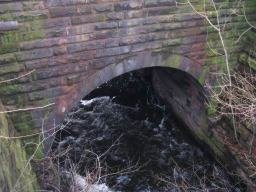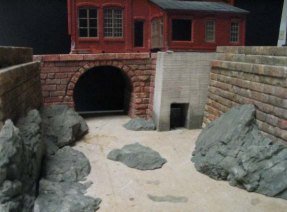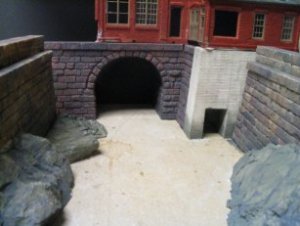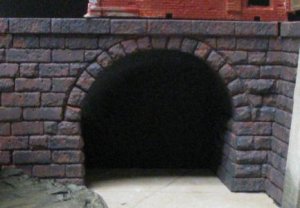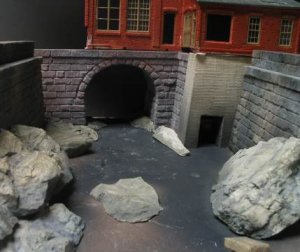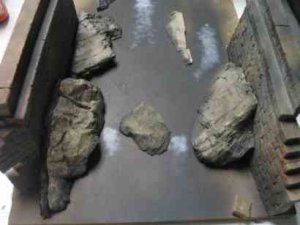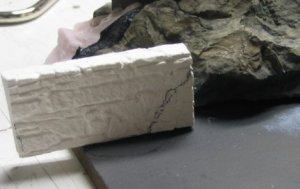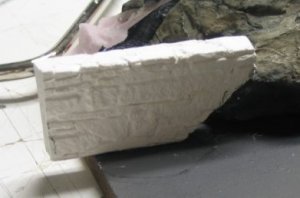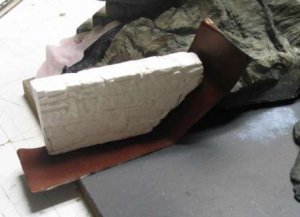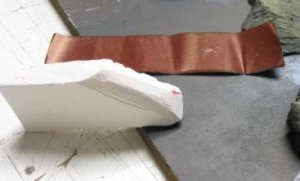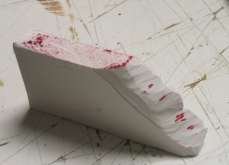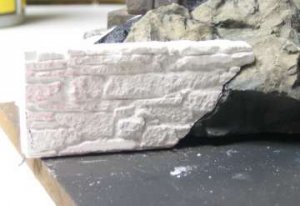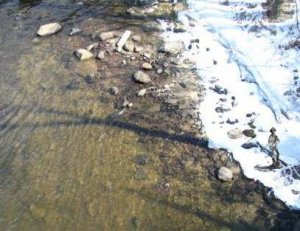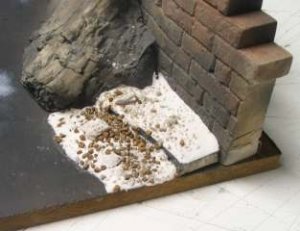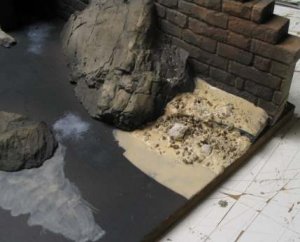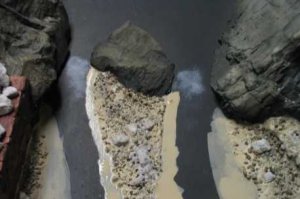What I had in mind was to come out of the tunnel with a turbulent, but relaxed, water flow. From there it would dump into a larger area, or deep pool thus reducing its velocity. The tail water from the turbine house will dump into this pool, also. To give credence to the pool I placed a plaster stone that had it’s back flattened by rubbing it on a piece of sandpaper laid out on the table, between the two major rock outcroppings that opposed each other from each bank.
This creates a weir effect. Instead of one big flow I divided it into two smaller flows, which will deliver their contents into the area at the front of the layout. Since I have to follow some basic physical properties like “water flows downhill”, I decide to do the two sections in front of the tunnel in two pours. The first pour would cover both areas. The second pour would be from the tunnel to the double spit.
I had noticed that in cases like the split, water rolls over the obstruction, and then makes white water. In other words, I wanted the “fake” water to maintain a meniscus or surface tension. I was able to do this with as thick pour of gloss medium, but GM doesn’t like large thick areas and will split and crack, which may be useful in the future on another project, but it wasn’t going to hack it here.
I have a bottle of WS water, which I am going to test before messing up my diorama, but from what I’ve read from other modeler’s experience, it might be the ticket. 1/8” pours are exactly what I’m looking for, as long as I can get the material to stop at the two tight spots in the split.



